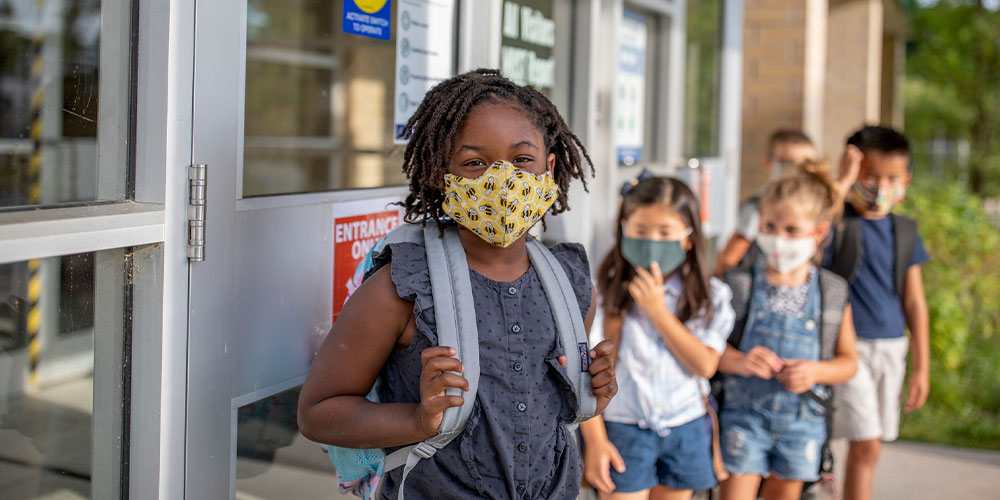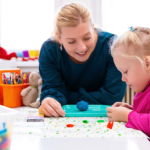Since the onset of the COVID-19 pandemic, our world has gotten a firsthand peek into other times in history when families and societies grappled with the challenges and tragedies of highly infectious diseases.
It’s natural that, like the rest of us, students’ curiosity would be piqued by past pandemics. Check out how you can capitalize on this interest in the classroom, particularly in the areas of history, science, and social–emotional learning.
Teaching the History of Pandemics
As terrible as COVID-19 is, we are extremely blessed to live in a time when we not only understand the power of basic hygiene in curbing sickness, but also have the medical technology to study, track, and combat diseases at a cellular level!
Unfortunately, humans living through pandemics in decades and centuries past did not have these advantages. Without the knowledge and resources we have now, pandemics such as small pox, the bubonic plague, and H1N1 wiped out significant percentages of the world’s population at different points in history.
Check out these short, educational videos you can use to introduce your class to these historical events, compiled in part by Education World.
Note: Due to the disturbing nature of these diseases and the discussions of suffering and death, these videos are more appropriate for kids grade 6–12.
Smallpox
Smallpox was vicious both in its deadliness and its side effects for survivors. Killing 1 in every 11 people it touched, the disease caused a horribly painful and foul-smelling rash on victims’ skin, and often left people so badly scarred that they lost their eyesight or became unrecognizable even to close family members. Thankfully, we’ve eradicated smallpox, but not before it killed upward of 300 million people in the 20th century alone.
Bubonic Plague (“The Black Death”)
Originating in China and carried to Europe through fleas riding on rats, the bubonic plague killed as many as a fifth of the world’s population in the 1300s. Though we have treatments for it now, this disease (caused by the bacterium Yersinia pestis) is still with us and attacks its victims through fever, headaches, muscle aches, and the characteristic painful lymph nodes (called buboes) and blackened skin on the extremities.
1918 Influenza (“The Spanish Flu”)
In many ways, the 1918 flu hit people in ways similar to the strains we experience today. However, this particular variant (called H1N1) provoked a strong inflammatory response that adversely impacted the lungs, leaving people open to viral and then bacterial pneumonia. Without a way to treat these pneumonias at the time, this led to the deaths of anywhere from 50 to 100 million people worldwide. Particularly of note is that unlike most flus, this virus claimed the lives not just of the very young and very old, but those aged 20–40 as well.
Teaching the Science of Pandemics
How do viruses spread? It seems like a simple question, but as we’ve seen in the last couple of years, the answer can get complicated—even politically charged—when we have to decide what measures a society should take to curb viral spread. For example, should we social distance? If so, by how many feet? From how many people? For how long? And should we wear masks? If so, what kind? How do we wear them properly? Do they work indoors? Outdoors?
These questions have highlighted the need for a broader cultural understanding of two key concepts: (1) how disease spreads and (2) how to interpret scientific literature.
Classroom Activity: How Disease Spreads
Different diseases travel in different ways. Some infect humans by the food we consume, others when we touch another person or object that’s already infected, and yet others travel through the air we breathe.
The method and rate of transmission can drastically impact how quickly a disease infiltrates a group of people. This interactive online activity from Gizmo allows students to specify the transmission parameters of a disease and then watch a simulation to see how quickly it spreads. The lesson also includes a worksheet of guided questions that students can complete individually or in groups.
Scientific Literacy Discussion Questions
Unfortunately, misconceptions and misinformation have been hallmarks of the COVID-19 pandemic. Some of that isn’t the general public’s fault. COVID-19 is a new virus, and in the beginning, scientists and researchers didn’t have time to conduct thorough, controlled studies on how the virus works and the best measures for combatting it. We were all dealing with disparate data sets and projections coming out in real time, and it was hard to know the best path to choose.
Your students have doubtlessly heard the debates over masks, quarantines, therapeutics, and vaccines. You don’t need to solve all these problems in the classroom for students to benefit from talking about them. Rather, these questions open up a great opportunity to talk about scientific literacy—that is, the ability to interpret data and evidence according to the conventions of the scientific method and statistical analysis.
Older students in particular might benefit from open-ended discussions on topics such as:
- How do you know if a scientific study is legitimate? You might touch on issues such as what “peer review” means, how to spot poor uses of statistics, the importance of control groups and sample sizes, and more.
- How do science and public policy intersect? CDC, FDA, WHO, NIAID. We’ve heard these acronyms in the news almost continuously in the last couple of years. One day soon, your students are going to be voting for the politicians who oversee such organizations and who have the authority to pass laws based on their recommendations. Talk to your students about the importance of being able to understand scientific data for themselves so they can be informed voters and responsible citizens.
- What does “follow the science” really mean? What happens when scientific studies contradict each other, or point out areas where not enough research exists yet? Should science be the only or final word on how we make decisions, or are there other factors to consider when determining our individual and collective actions?
Teaching Social–Emotional Learning through Pandemics
The negative effects of social distancing on children cannot be overstated. One study showed that rates of anxiety and depression in children doubled over the course of the pandemic, and another predicted that one in every three students would re-enter the classroom with a mental or emotional struggle.
More than ever before, parents and educators know the importance of healthy community in their students’ lives. These needs do not go away even during a health crisis, and it’s led many to consider how to be more intentional about building social systems that will withstand even emergency situations. Here are some evidence-based strategies from Edutopia:
- Creating continuity: When life gets upended, stress is a natural response. To reduce some of that mental and emotional load, it’s important to try to provide as much structure and familiarity as possible. That’s why a predictable school day can be such a lifeline for students facing tough situations at home. When it comes to teaching and learning during a pandemic, educators and families should strive to create a sense of continuity for students, including:
- Regular school hours
- Group learning opportunities, including breakout groups, circle time, check-ins, and sharing time
- Chances for socialization, such as a pen-pal program or “virtual recess”
- School-wide cultural and communication norms, such as using a rose–thorn–bud structure for sharing
- Modeling metacognition: Did you know the success of students’ interpersonal skills may have more to do with how they think than how they interact with others? That’s why metacognition—thinking about one’s own thoughts—is paramount to mental and social health. Especially when students are learning in a more isolated environment, it’s important to help them reflect on their learning and their emotions throughout the day to prevent negative thought patterns from taking hold. For example, when students encounter new learning material, part of their assignment might be to ask themselves:
- What did I feel successful with during this new learning and why?
- What was challenging during this new learning and why?
- Building support: Educators have known for years that parental and community involvement is essential for students to experience an excellent education. This is especially true when students are learning outside the traditional classroom. Parents need to know how to help students use educational technology as well as helping them persist in school, whether that’s simply reminding students to log in to class or keeping them motivated when they’re physically apart from their teachers and peers. It’s paramount that educators and school leaders create opportunities for ongoing feedback and dialogue with parents on their children’s needs (educational and otherwise) and the school’s strategies for keeping students healthy during challenging times.






